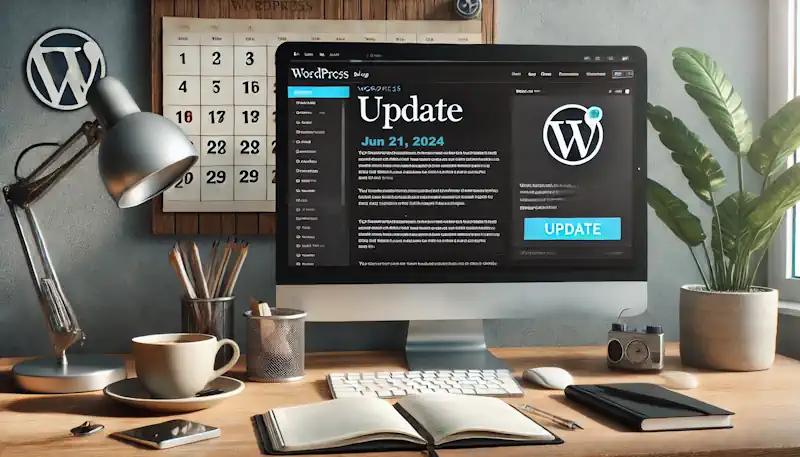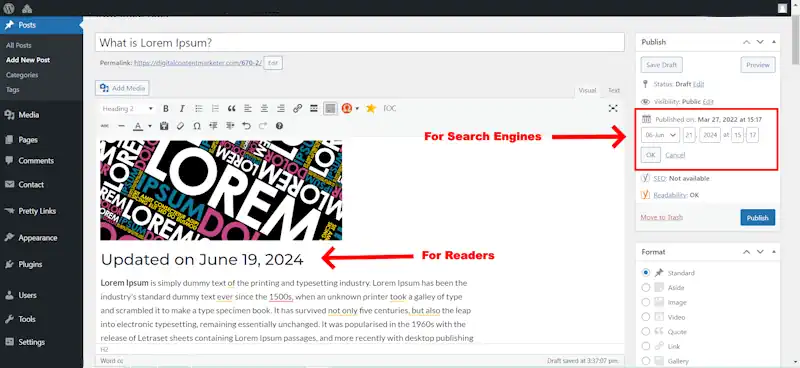Regularly reviewing and updating your content is essential to maintain its relevance and accuracy. As information evolves and industry trends shift, updating your content ensures that your audience receives the most current and valuable insights.

By refreshing your content periodically, you not only improve its SEO performance but also reinforce your authority and trustworthiness in your field. Stay proactive in content maintenance to keep your audience engaged and informed.
Effective Update Strategies
Updating your content is a crucial practice for maintaining relevance and enhancing user engagement.
New Developments
One effective method is to add new information that reflects the latest trends, statistics, or developments in your field. This not only improves the accuracy of your content but also boosts its value to your readers, making it more likely to be shared and referenced. You might also consider integrating new keywords that align with current search queries, as this can improve your SEO performance and attract more organic traffic.
Links
Incorporating new links is another excellent way to update your content. Internal links can help guide readers to other relevant articles on your site, improving their overall experience and increasing page views. External links to reputable sources can also enhance the credibility of your content, providing readers with additional resources and supporting information. Regularly checking and updating broken links ensures that your content remains user-friendly and authoritative.
Graphics and Videos
Enhancing your content with fresh graphics and multimedia elements can significantly increase its appeal. High-quality images, infographics, and videos can break up large blocks of text, making the content more digestible and engaging. Visual elements can also aid in explaining complex concepts, helping readers to better understand and retain the information. By continually updating your graphics and multimedia, you can keep your content visually appealing and aligned with current design trends.
Structure
Lastly, revisiting the structure and readability of your content can make a substantial difference. Updating headings, subheadings, and bullet points can improve the flow and organization, making it easier for readers to scan and find the information they need. Ensuring your content is mobile-friendly and accessible to all users can also broaden your audience reach. Regularly refreshing these aspects of your content ensures it remains user-centric and effective in delivering its message.
Making Your Updates Visible
But how exactly do the search engines and people know if you’ve updated your content?
For Search Engines
Search engines and people can determine if you’ve updated your content through various indicators. For search engines, factors such as changes in the publish date, newly added keywords, and updated meta descriptions signal that the content has been refreshed. Incorporating the latest statistics, adding new sections, and improving the readability of the content can enhance its relevance.

For Readers
For readers, prominently displaying an “Updated on” date and clearly highlighting new information or changes in the content can make it evident that the material has been revised. Regularly updating your content not only keeps it current but also demonstrates your commitment to providing accurate and up-to-date information.
Given its widespread use, I will use WordPress as an example to illustrate the updates, but of course, it applies to whatever platform your content is on.
Options for Updating a Blog Post
When you update a blog post in WordPress, there are a few best practices to consider to ensure both your readers and search engines know it’s been updated.
Change the Publication Date
Pros: Changing the publication date to the current date can make the post appear as new content, potentially improving its visibility in search results and attracting more attention from visitors.
Cons: Frequent changes to the publication date can be seen as manipulative by search engines if overused.
Add an “Updated On” Note
Pros: Clearly indicate within the post that it has been updated, along with the date of the update. This maintains the original publication date while informing readers and search engines of the recent changes.
Cons: This method relies on search engines recognizing the update based on content changes and not solely the publication date.
Both Change the Publication Date and Add an “Updated On” Note
Pros: Combines the benefits of both methods, making it clear to readers and search engines that the content is fresh and has been revisited.

Informing Search Engines
XML Sitemaps
Ensure your XML sitemap is updated. WordPress plugins like Yoast SEO automatically update the sitemap when content changes, helping search engines discover updates.
Reindexing on Google and Bing
You can request indexing or re-indexing in Google through the Google Search Console. Here’s how:
- Log in to Google Search Console.
- Select your property (website) from the dashboard.
- Go to the URL Inspection Tool.
- Enter the URL of the page you’ve updated in the search bar and press Enter.
- If the URL is already in Google’s index, you will see an option to “Request Indexing”.
- Click “Request Indexing” to prompt Google to re-crawl the updated page.
Bing has a similar tool called Bing Webmaster Tools. Here’s how you can request indexing:
- Log in to Bing Webmaster Tools.
- Select your site from the dashboard.
- Navigate to the URL Submission Tool.
- Enter the URL of the updated page you want Bing to crawl and index.
- Click “Submit” to request indexing.
This will prompt Bing to re-crawl the updated page and update its index accordingly.
Internal Linking
Update internal links within your site to point to the newly updated content. This can signal to search engines that the content has been refreshed.
Best Practices
Substantial Updates
Make meaningful updates to the content, such as adding new information, improving clarity, and updating statistics or references. Minor changes may not be enough to signal an update to search engines.
Maintain Original URL
Keep the original URL intact to preserve any existing SEO value, backlinks, and social shares.

Example Implementation
- Post Title: “Understanding Duplicate Content and Its Impact on SEO”
- Original Publication Date: January 1, 2023
- Updated: June 1, 2024
- Content Note: “This post was updated on June 1, 2024, to include new insights and updated SEO strategies.”
By following these practices, you can effectively communicate updates to both your audience and search engines, ensuring your content remains relevant and authoritative.

